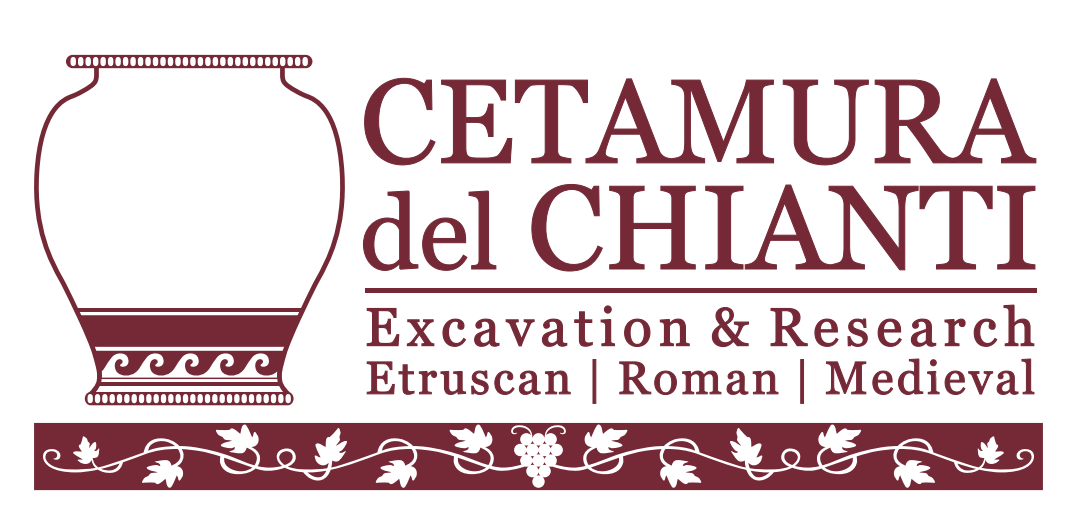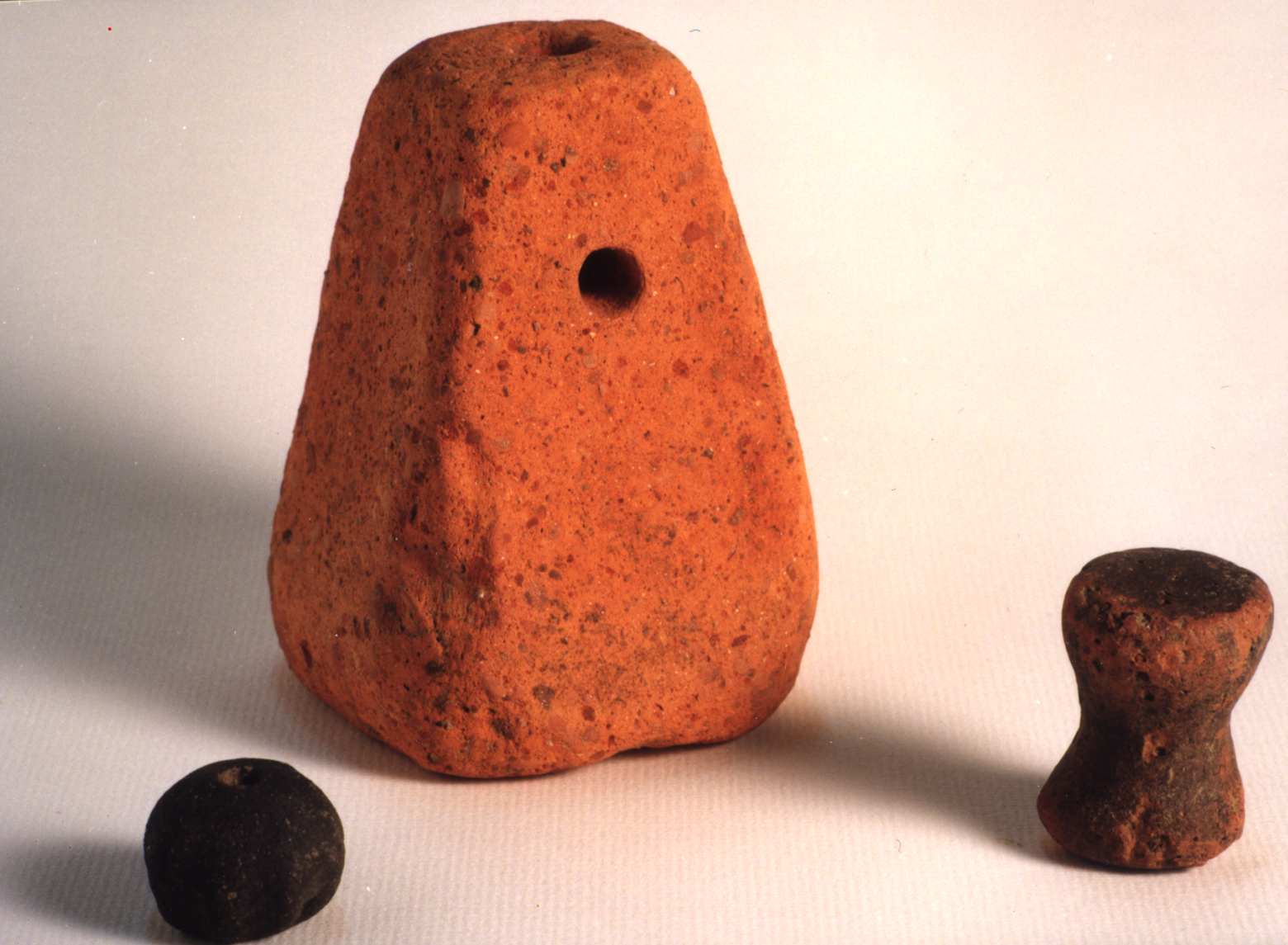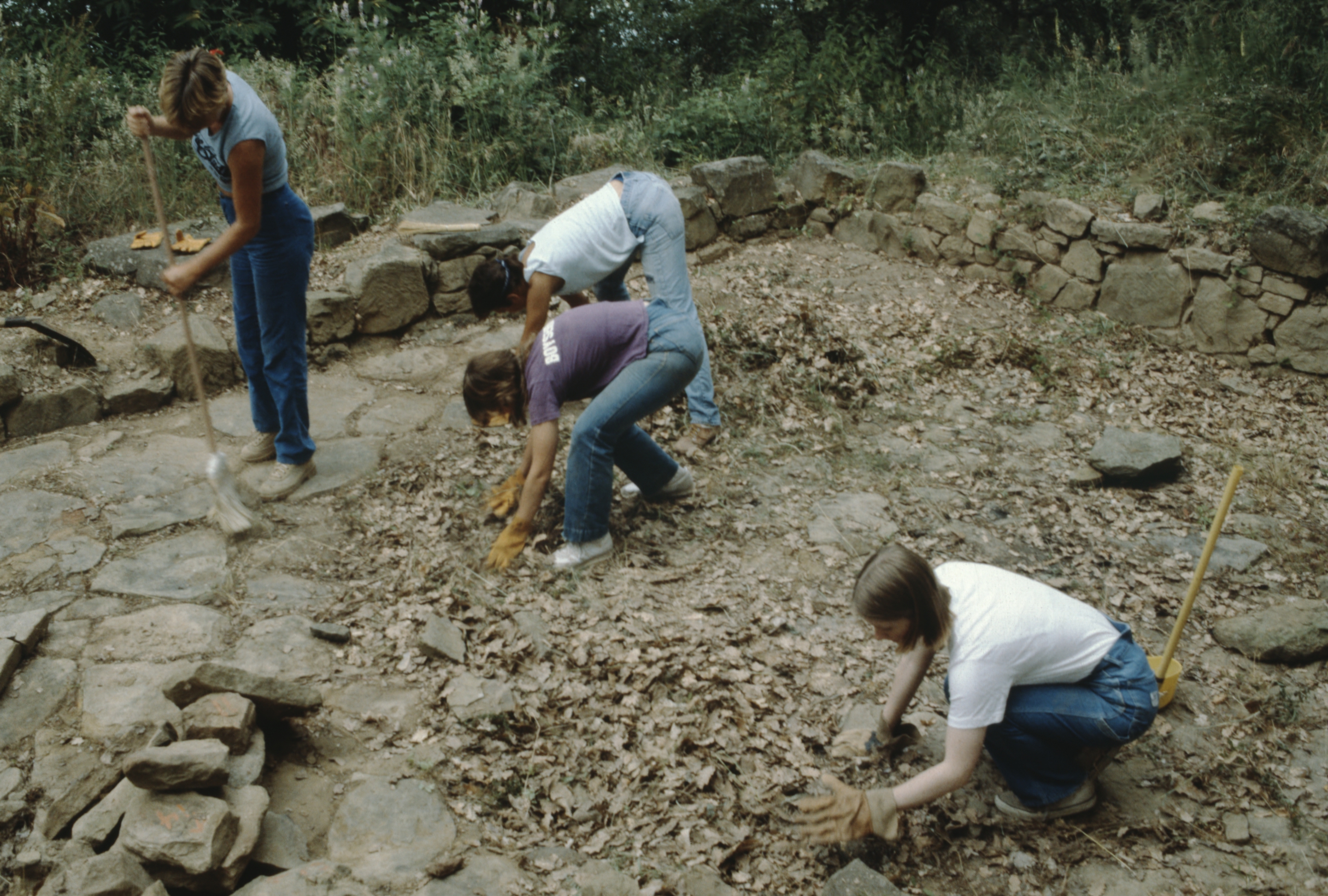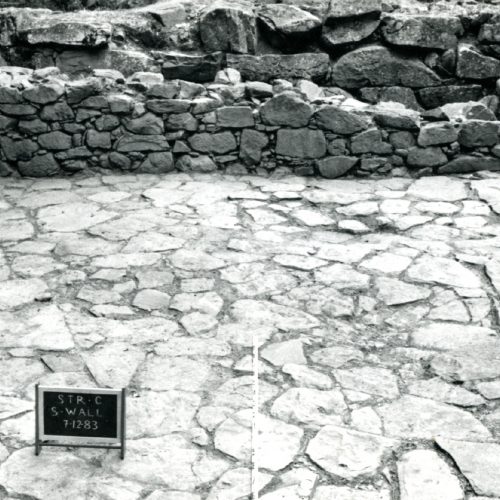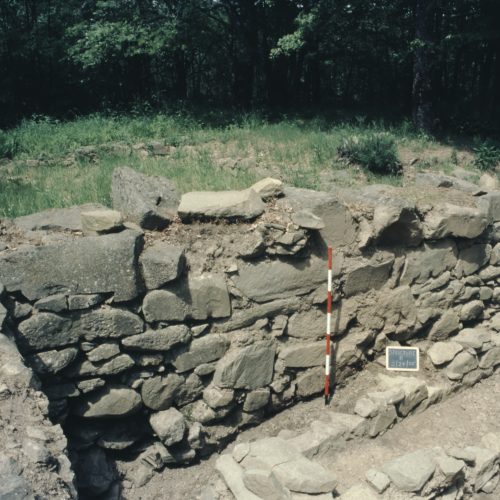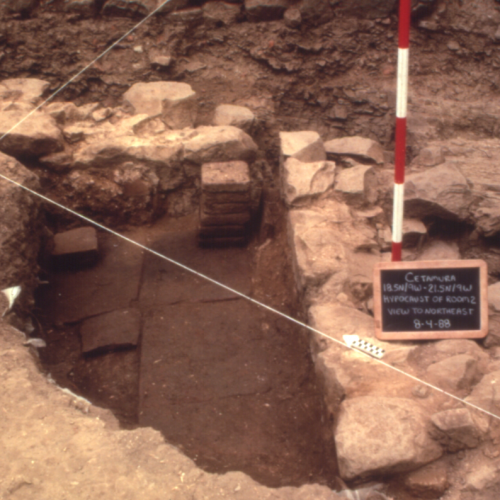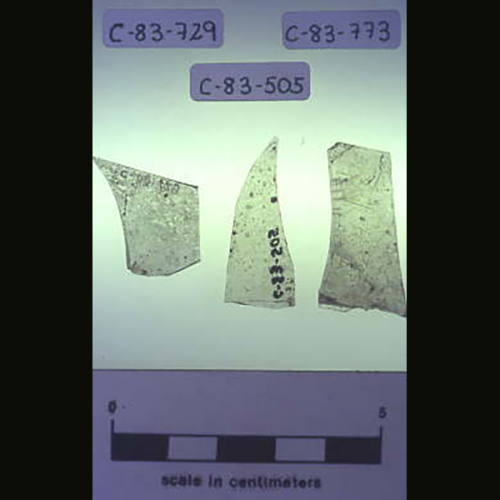1983-2000
Artisan's Area and Roman Villa
A major hypothesis for the nature of Etruscan activity at Cetamura is that it featured a center especially set off for the work of artisans on the northwest side of Zone II. Investigations in the area had already begun with the excavations by Clark Sykes and Patrick Rowe in Structures A, B and C (1973-1982). Weaving implements found in and around Structure C had led to a theory that the large paved room (one of only two Etruscan paved structures so far discovered at Cetamura) may have served as a workshop for spinning and weaving [a.]. Structure C had suffered from vandalism, and it was necessary to carry out restoration [b., c.].
New investigations established a chronology of Etruscan habitation in two major phases, ca. 300-150 BCE and ca. 150-early 1st century BCE. Under the direction of Dr. Nancy de Grummond, with assistants Cheryl Sowder, Jeanine Stage and Patrick Rowe, investigations continued in A and B [d.], leading to the identification of these structures as connected with the management of water that would have been of use in artisanal activities. Structure A was certainly a basement cistern and Structure B probably also had that usage in its first phase. These thick-walled basements would have served to support substantial structures above, presumably made of perishable timber. Numerous finds of broken ceramic roof tiles came from A and B, suggesting that they, like Structure C, suffered from a collapsed roof, sometimes with evidence of burning.
Through the years the repeated discovery of iron slag in the northwest complex suggested the presence of blacksmith activities, and the discovery of a workshop with a ceramic kiln (Structure K, 1990-97) for making brick, roof tile and weights for the loom added a new and important component in the artisan hypothesis.
A completely new piece in the puzzle of ancient Cetamura was found on Zone I (1984 and following), when the underfloor heating system of a Roman bath began to appear. A well-preserved brick pedestal [e.] was unmistakable as an indication that the site had been taken over by a Roman. The owner was probably a veteran of the army, who established a small country villa. Roman artifacts such as window glass [f.], pottery and coins led to dating in the period of Augustus (27 BCE-14 CE) and later.
Dr. de Grummond and company initiated a policy of backfilling almost everything with earth. Because Structures B and C were both vandalized in the early years, they had to be restored and eventually filled back in.
